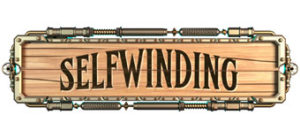Receiving constructive criticism can be as difficult as giving it. It can be challenging to divorce personal feelings—and all the hard work put into the previous draft—from someone else’s opinion. But when I put my story out there to receive constructive criticism, I need to be open to it. I have to put aside my feelings and understand that these comments aren’t about my quality as a writer; they’re about the execution in this one specific piece of writing. Even if I think it’s my very best work, it’s only my very best work so far. Think of all the ways it can be improved! So, starting with a deep breath, constructive criticism can be the best thing for my work, especially if I’m open to change. I have a three step-method for taking in constructive criticism that includes listening to what is said, evaluating how that critique fits with my plan for the story, and then getting excited to revise!
Listen
When I get feedback from a critique, I start by reading each comment as though I’m another evaluator on the manuscript. I’m not the author when I first read a critique. I’m another objective party, taking in someone else’s comments to get the big picture of the feedback. I start by reading the summary comments and then all of the in-line comments before making any decisions about how to act on those comments.
Evaluate
Now that I’ve listened objectively, I get to be the author again! It’s important to keep some objectivity, after all the purpose of constructive criticism is to identify ways to strengthen the writing. Now, though, I start deciding how to address each comment. Should I keep the exact suggestion a reviewer made? Should I accept that something’s hinky but enact my own solution? Should I ignore the comment? Ignoring a comment is a perfectly legitimate way to respond to a critique. Someone might not “get” what I’m doing, and it’s okay for me, the author, to decide that I know what’s best for my work.
One method I use for evaluating comments is to have the comments and my story side by side in separate documents. If I disagree with a comment outright, I don’t move it to my story document. If it’s an easy fix (a grammatical error or improving word choice), I immediately do it. If it’s a trickier one or one that I’m not sure I want to make, I summarize the feedback as in-line comments on my story document and add my thoughts. At the end of the evaluation, I have all the comments I will or possibly want to respond to on my story document.
Get Excited
After every critique I walk away feeling excited to work on my story. I’ve thought about the feedback and, through evaluation, have come up with at least a few solutions to strengthen some of the weaknesses of the manuscript. Yes, I might have a lot of work ahead. Yes, someone might not have seen all of my brilliance. But I now have ideas for making the story better, and that’s a pretty exciting thing.
